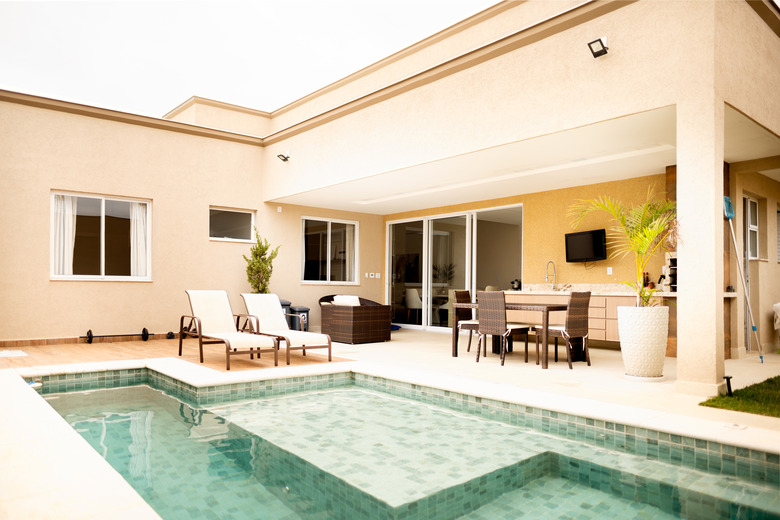How To Fix The Auto Fill On A Swimming Pool
We may receive a commission on purchases made from links.
The auto-fill valve on a swimming pool is designed to do exactly what the name implies: automatically fill the swimming pool. These valves are a good addition to a pool's mechanical system, especially if the pool is located in a warm, dry, and arid region. Pool water can evaporate as much as 1/2 inch per day, requiring frequent filling. This mechanical device helps maintain the pool's water level automatically without the need for constant monitoring. Like any mechanical device, it can fail, requiring a fix or replacement.
How the Auto Fill Works
How the Auto Fill Works
The mechanical auto fill on a swimming pool works like a toilet valve assembly. There's a float attached to the valve that fills up a tank. The tank is equalized with a 1 1/2-inch pipe that fills the separate tank next to the pool. Some auto-fill systems are side mounted, and some are bottom mounted.
This tank has a cover that's very similar to the covers on the skimmer baskets. As the water level drops in the pool, so does the level in the filling tank because the equalizer pipe creates a static level between the pool and the tank. This equalizer line can sometimes be the cause of a pool's auto-filling system not functioning properly. Be sure the equalizer line is free and clear of any debris or clogs.
Troubleshooting the Water Flow
Troubleshooting the Water Flow
Now that you are sure that the equalizer line is free and clear of any clogs, check the water supply. The water supply should have some sort of shutoff valve that's typically near the house along with a backflow preventer or pressure vacuum breaker. These types of devices not only isolate the water to the auto-flow valve but keep any pool water from getting back to your home's water system.
Check to make sure that the supply valves are on and you have flow through the device. Flow can be checked by opening the small valves on the device called test ports (if so provided). Open one test port on the inlet side and verify water pressure. Do this again on the outlet side. Do you have water pressure? If so, move on to the auto-fill valve at the pool.
Troubleshooting the Auto-Fill Valve
Troubleshooting the Auto-Fill Valve
The auto-fill float needs to move freely to function properly. Check to make sure that the float does in fact move freely and clean any debris that may prohibit the float from floating. If the auto fill is not feeding water, submerge the float and check to see if water flows through the valve. If so, you're in luck, and you may just need to make an adjustment to the float assembly. If you suspect that you may have a leak in your piping, it may be time to consult with a professional.
If the auto fill is overfilling the pool, lift up on the float, checking to verify that the float is indeed shutting off the water to the auto fill. Other possibilities are that the float itself is flooded and sinking. This too will cause an auto fill to overfill a pool. Check to make sure that the auto fill is functioning properly. Some things are just worth replacing for peace of mind.
Fixing the Auto Fill
Fixing the Auto Fill
Much like a toilet float valve, with an auto fill on a swimming pool, it is sometimes best to simply replace the whole valve assembly.
- Shut off the water supply to the auto fill.
- Remove the auto-fill assembly.
- Using Teflon tape, tape the male threads of the new float assembly. Do not use paste. Paste can get lodged in the valve seats and cause the valve to not shut off.
- Replace the valve assembly. Do not overtighten. Hand tight should be sufficient.
- Turn the water back on and check for leaks. Take a good listen to verify that the valve is indeed stopping the flow of water at the level desired.
- Resume poolside activities.
